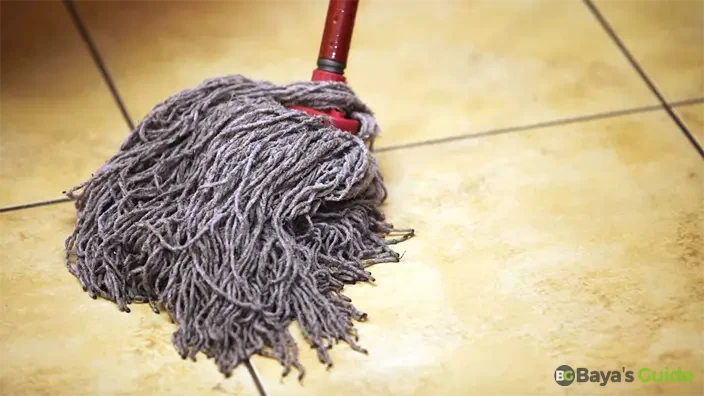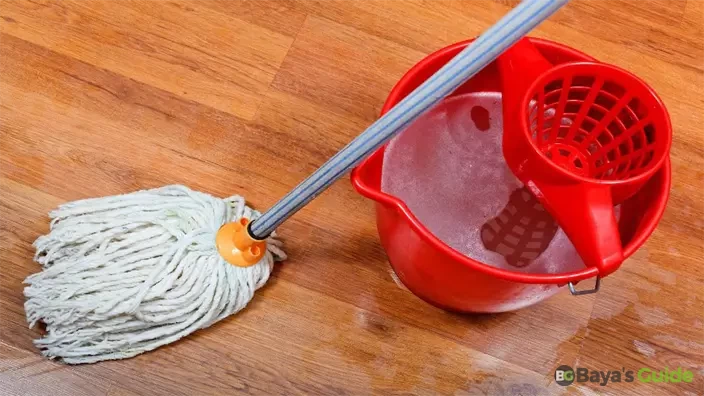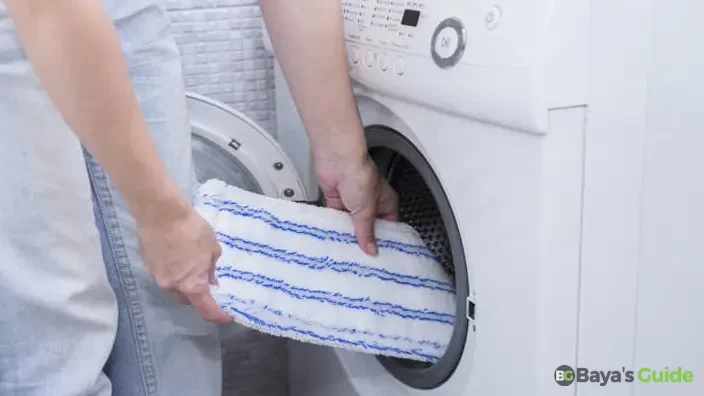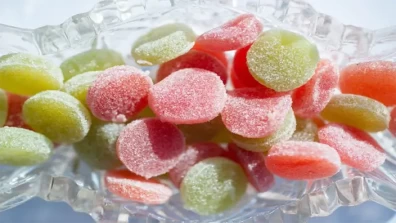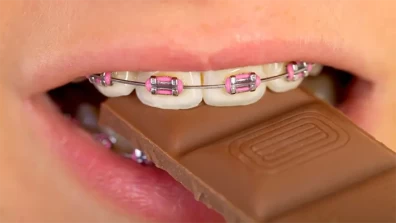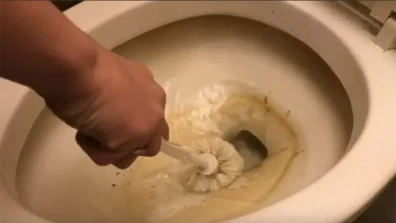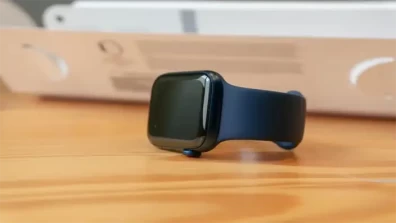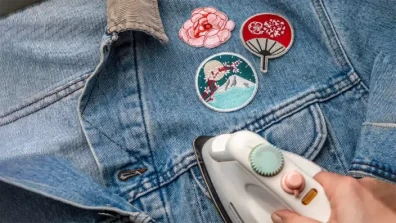Maintaining a clean and efficient mop is crucial for ensuring effective floor cleaning in your home or workspace. One often overlooked aspect of this cleaning tool is the mop head. Over time, mop heads can accumulate dirt, grime, and bacteria, diminishing their cleaning capabilities.
In this article, you'll be guided through a step-by-step process on how to clean a mop head, ensuring not only a sanitized cleaning tool but also a healthier living or working environment. Let's dive into the simple yet essential steps to revive your mop head's functionality and keep your floors spotless.
Table of Contents
Mop Cleaning - A Comprehensive Step-By-Step Cleaning Guide
1- Rinse With Hot Water
It is vitally important to wash and rinse the mop properly. Soon after giving every wipe with your mope, wash it instantly under the hot water. After wringing it thoroughly, spread it in awell-ventilated area to dry it then store it. If you have the facility to let the sun's rays come to your house directly, then it’s great to spread it in the sun which can expedite the process.
2- Dip Your Mop In A Cleaning Solution
Even after washing and rinsing, your mop starts smelling stinky after each four uses at least. For its solution, pour 8 FL oz) of white vinegar or 118.5 ml of bleach in a 3.79 l of hot water. Soak the head of your mop in that mixture for almost 15 minutes. Then, wring it out to squeeze all the water and spread it in an open area to dry.
Remember, not to dunk synthetic mops or sponge mops as it can damage the materials. Vinegar solution is a great option for cleaning your mop to avoid it getting malodorous. Plus, make sure you spread the mop in a ventilating area. Then, pack it in the store a broad away from your pets and children.
3- Wash Detachable Mop Heads In The Machine
Another appreciable way of washing your mop is to detach towel or cloth strips from the rod. Give the detached mop head a few runs in the washing machine by pouring a cup of florid detergent with a hot water setting. Allow your mop cloth to dry in open air or sun and then reattach it to its handle back. Furthermore, you can also add a couple of full lids of bleach to the washing machine to get it to be disinfected.
4- Rinse The Mop Towel In The Dishwasher
The mop heads are designed to be removed from the handles, so you can wash them in a dishwasher instead of washing them in a washing machine. Take an open-mouthed bucket and pour a cup (237 ml) of white vinegar while adding detergent to the water. Start your dishwasher on an average move. Squeeze your mop to let the additional water flow down from the mop cloth properly and then spread it to airdry before you use it next time.
Maintaining A Dust Mop
To maintain a dust mop and ensure optimal performance, follow these steps:
1- Regular Shaking OR Beating
- Take the dust mop outdoors.
- Shake or beat it to remove loose dust and debris.
- This helps prevent the mop from redistributing dust during use.
2- Vacuum Cleaning
- Use a vacuum cleaner with a brush attachment to gently remove finer particles from the mop head.
- Vacuuming helps keep the mop more effective in trapping dust.
3- Machine Washing
- Check the manufacturer's instructions to see if your dust mop is machine washable.
- If it is, wash the mop head according to the provided guidelines.
- Use a mild detergent and avoid fabric softeners as they can reduce the mop's dust-collecting ability.
- After washing, allow the mop head to air dry completely before using it again.
- Ensure it is thoroughly dry to prevent mold or mildew growth.
5- Replace OR Refill
- If your dust mop has a removable and replaceable head, consider replacing it periodically for optimal performance.
- For mops with refillable pads, replace or clean the pads according to the manufacturer's recommendations.
6- Store Properly
- Store the dust mop in a dry and well-ventilated area to prevent musty odors and microbial growth.
- Avoid leaving the mop in damp or humid conditions.
7- Inspect For Damage
- Regularly check the dust mop for any signs of wear, tear, or damage.
- Replace damaged parts promptly to maintain the effectiveness of the mop.
By incorporating these maintenance practices, you can extend the lifespan of your dust mop and ensure that it continues to efficiently capture and hold dust, keeping your living or working space clean and healthy.
How To Clean A Steam Mop?
If your mop is with a pad, wash the pads after every use after removing it from the holder in the washing machine. Steam mops are the favorite of most people as their pads come with removable fabric pads. After removing it from the rod, wash and rinse it on a normal cycle with an effective and florid laundry detergent.
Don’t feel tired of washing it alone, you may add it with loads of laundry after rinsing it in water once. You need not worry about thinking that the mop pad may be harsh, it’s quite soft and friendly to other garments
1- Wipe Out The Reservoir
Don't look over cleaning your steam mop's tank or reservoir after evacuating it with a damp rag or dish towel. You can also apply one to three pieces of cloth to de-soiling and cleaning the tank inside.
2- Scouring Your Mop
Moisture can create rust at the joints and nails so avoid washing it with a bulk of water. It is finer to wipe the internal to the external surface of your steam mop to protect it from the debris to be built layer after layer. Be aware, not to leave any moisture while cleaning with a damp towel.
You Might Also Like: How To Draw A Vampire
Storing your mop properly is essential for maintaining its cleanliness and prolonging its lifespan. Here are steps to store your mop effectively but before storing, ensure that the mop head is clean and completely dry. This helps prevent mold and unpleasant odors.
- Choose A Dry Storage Location
Select a dry and well-ventilated storage area to prevent the growth of mold and mildew on the mop.
- Elevate The Mop
Store the mop off the floor to facilitate air circulation and prevent the mop head from touching the ground.
- Use Hooks OR Wall Mounts
Install hooks or wall mounts in your storage area to hang the mop. This helps the mop head maintain its shape and allows for proper drying.
- Store Mop Heads Separately
If you have multiple mop heads, store them separately to avoid cross-contamination between different areas or types of floors.
- Keep Away From Chemicals
Store the mop away from harsh chemicals or direct sunlight, as these factors can degrade the mop fibers and affect their performance.
- Use Mop Holders OR Racks
Consider using mop holders or racks designed for storage. These can keep the mop organized and prevent it from leaning against other surfaces.
- Regularly Inspect For Wear
Periodically check the mop for signs of wear, damage, or fraying. Replace any worn-out parts promptly to maintain effective cleaning.
- Secure Handles Properly
If your mop has an extendable or detachable handle, secure it properly when storing it to prevent accidental damage.
- Label OR Color Code
If you have multiple mops for different purposes, consider labeling or color-coding them to identify their designated use easily.
By following these steps, you'll not only keep your mop in good condition but also create an organized and efficient storage system. This ensures that your mop is ready for effective cleaning whenever needed.
Cleaning Solutions For Mop Maintenance
You must keep the supplies and equipment you need for cleaning before you go for cleaning as follows:
- A Bucket/An Open-Mouthed Tub
- Hot Water
- Cleaning Agent (e.g. White Vinegar, Dishwasher Soapy Liquid, Florid Detergent, Lysol, Hydrogen Peroxide, OR Bleach)
Tips For Mop Cleaning
Cleaning your mops regularly is crucial to prevent the spread of dirt and bacteria. Here are some tips for effectively cleaning your mops:
1- Remove Loose Debris
Before any wet cleaning, shake or beat the mop outdoors to remove loose dirt and debris. This prevents excess grime from entering your cleaning solution.
2- Pre-Treat Stains
For stubborn stains on the mop head, pre-treat them with a stain remover or a mixture of baking soda and water before washing.
3- Machine Washable Mops
If your mop is machine washable, follow the manufacturer's instructions for washing. Use a mild detergent and wash in warm water.
4- Hand Wash If Necessary
If the mop is not machine washable, hand wash it in a bucket or sink with a mixture of mild detergent and warm water.
5- Avoid Fabric Softeners
Skip fabric softeners when washing mop heads, as they can leave a residue that reduces the mop's effectiveness in picking up dirt.
6- Rinse Thoroughly
Rinse the mop head thoroughly to remove all soap or detergent residue. Residue can attract more dirt and affect the mop's performance.
7- Air Dry Completely
After washing, allow the mop to air dry completely. Hang it in a well-ventilated area to prevent mold and mildew growth.
8- Disinfect Regularly
To kill bacteria and germs, especially if you've been cleaning a heavily soiled area, consider disinfecting the mop by soaking it in a solution of water and disinfectant.
9- Replace Mop Heads
If you have a mop with a replaceable head, replace it regularly, especially if it shows signs of wear, fraying, or reduced effectiveness.
10- Rotate Mops
If you use multiple mops, rotate them regularly to give each one sufficient time to dry and prevent bacterial growth.
11- Clean Handles & Frames
Don't forget to clean the mop handles and frames. Wipe them down with a disinfectant or soapy water to eliminate any lingering bacteria.
By incorporating these tips into your cleaning routine, you'll ensure that your mops remain effective, hygienic, and ready for use in maintaining a clean living or working space.
Frequently Asked Questions
How Do You Keep Mopped Heads From Smelling?
When you delay washing your mop after two to three wipes, it doesn’t stop odorizing even after a thorough wash. Vinegar is a natural disinfectant and deodorizer that eliminates the unpleasant stinky smell from your mop. For that, you need to mix a cup of white vinegar in an open bucket of hot water and then soak the mop cloth for an hour. Give it a few rinses with plain water and spread it to the air dry or in the sun to let it dry to the inner surface.
How Do You Clean A Dirty Mop With Baking Soda?
If you get averse to washing your string or flat mops as it is too dirty, then take three liters of hot water and add 100g of baking soda. It’s also beneficial to mix 30g of liquid dish soap to get the dirt out of the weaving of fabric. To wash microfiber mops, fill the tub with hot soapy water and then dip the mop head deep into the water for about 10 minutes before you wash it off thoroughly.
Which Scent Is Good For Mopping?
There are a variety of florid detergents available in the market that provide your mop with a refreshing scent eliminating the strong odor. You will notice that some citrus fragrances are included in cleaning products such as orange, grapefruit, Mandarin, lime, and lemon. These citrus-made cleaning products also come with sanitizing properties.
Conclusion
In conclusion, maintaining a clean mop head is essential for effective floor cleaning and a healthier living or working environment. Whether dealing with wet, dust, or steam mops, following the recommended cleaning methods ensures optimal performance. Regular washing, disinfecting, and proper storage contribute to a longer lifespan and continued efficiency. Additionally, adopting good cleaning habits, using suitable detergents, and rotating mop heads when necessary are key practices in achieving hygienic and spotless floors. By incorporating these tips, one can elevate the longevity and functionality of their mop, facilitating a more sanitary and pleasant living or working space.

